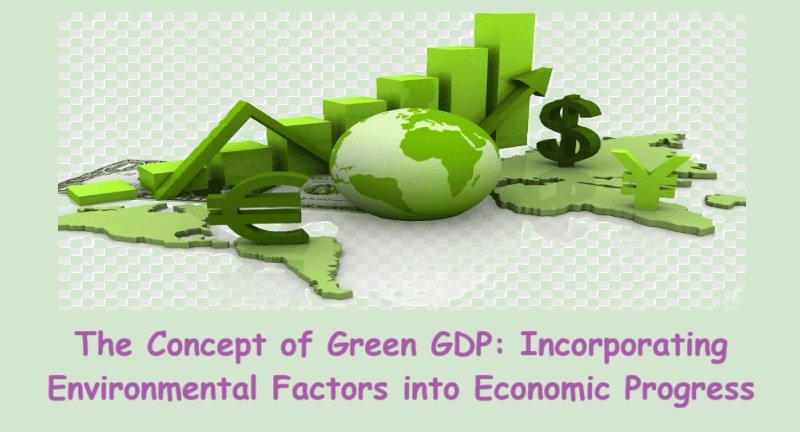The Concept of Green GDP: Incorporating Environmental Factors into Economic Progress
The Concept of Green GDP
When we talk about economic growth, we often focus on traditional indicators such as Gross Domestic Product (GDP). However, in recent years, there has been a growing recognition of the need to incorporate environmental factors into our understanding of economic progress. This has given rise to the concept of Green GDP.
What is Green GDP?
Green GDP is an alternative measure of economic growth that takes into account the environmental impact of economic activities. It aims to provide a more comprehensive picture of economic progress by factoring in the costs of environmental degradation and depletion of natural resources.
Why is Green GDP Important?
The conventional GDP measure only considers the monetary value of goods and services produced within a country’s borders. It does not account for the negative externalities associated with economic activities, such as pollution, deforestation, and depletion of natural resources.
By incorporating environmental factors, Green GDP provides a more accurate assessment of the true costs and benefits of economic growth. It helps policymakers and businesses make informed decisions that promote sustainable development and minimize the negative impact on the environment.
How is Green GDP Calculated?
Calculating Green GDP is a complex task that requires data on various environmental indicators. These indicators can include air and water pollution levels, carbon emissions, deforestation rates, and the depletion of natural resources.
By quantifying the environmental impact of economic activities, economists can estimate the costs associated with environmental degradation. These costs can then be subtracted from the conventional GDP figure to arrive at the Green GDP.
The Benefits of Green GDP
Green GDP offers several benefits over the traditional GDP measure:
- More accurate reflection of economic progress: Green GDP provides a more comprehensive assessment of economic growth by considering the environmental costs and benefits.
- Promotes sustainable development: By highlighting the environmental impact of economic activities, Green GDP encourages policymakers and businesses to adopt sustainable practices.
- Guides policy decisions: Green GDP can help policymakers make informed decisions that balance economic growth with environmental conservation.
- Raises awareness: Green GDP raises public awareness about the importance of environmental sustainability and the need to transition to a greener economy.
Challenges in Implementing Green GDP
While Green GDP offers many advantages, there are also challenges in its implementation:
- Data availability and reliability: Collecting accurate and comprehensive data on environmental indicators can be challenging, especially in developing countries with limited resources.
- Complexity: Calculating Green GDP requires complex modeling and estimation techniques, which can be difficult to implement consistently across different countries and regions.
- Subjectivity: Assigning monetary values to environmental costs and benefits involves subjective judgments, which can introduce biases and controversies.
- Resistance to change: Shifting from the traditional GDP measure to Green GDP requires a paradigm shift in how we define and measure economic progress, which may face resistance from vested interests.
Conclusion
Green GDP is a valuable tool for promoting sustainable development and ensuring that economic growth is compatible with environmental conservation. While it faces challenges in implementation, its benefits outweigh the difficulties. By incorporating environmental factors into our understanding of economic progress, we can create a more sustainable and prosperous future for generations to come.
